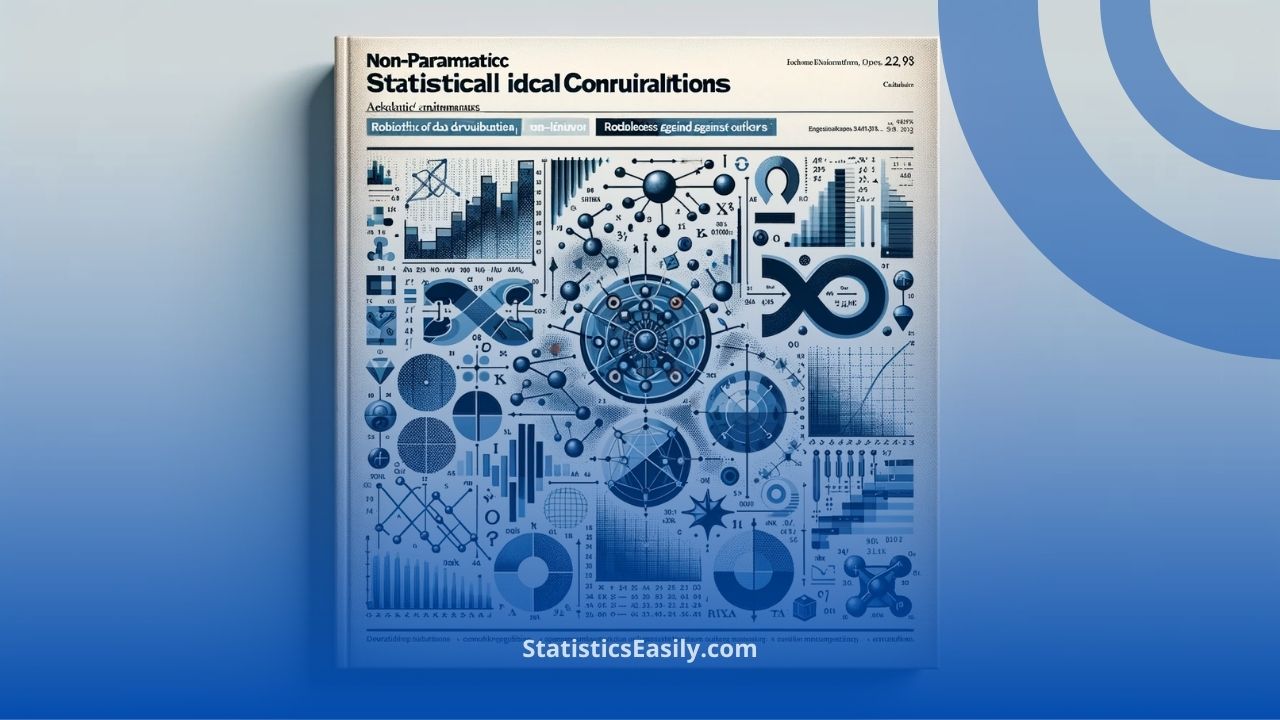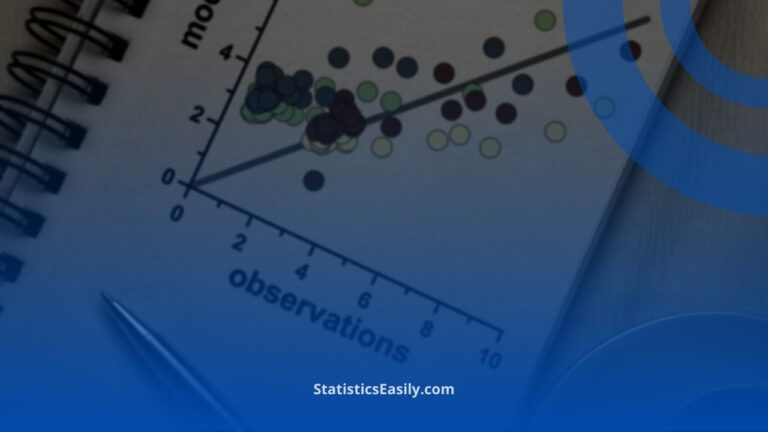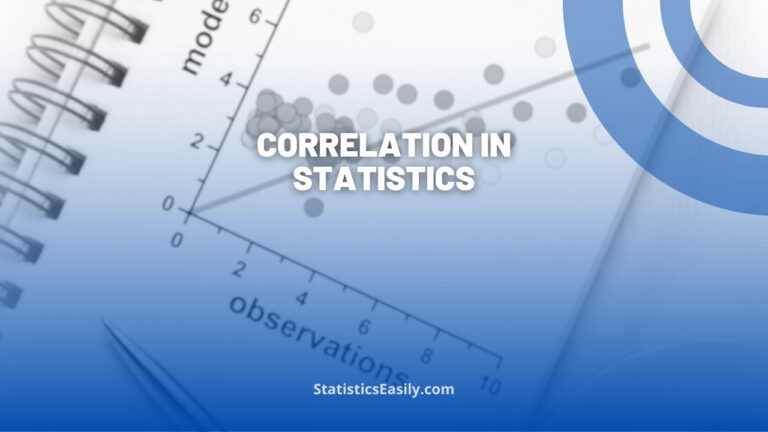Kendall Tau-b vs Spearman: Which Correlation Coefficient Wins?
You will learn the decisive factors in choosing the proper non-parametric correlation coefficient (Kendall Tau-b vs Spearman) for your data analysis.
Introduction
In statistical analysis, correlation is the backbone for understanding the relationship between variables. Whether in biology, finance, or social sciences, quantifying the strength and direction of association between two entities is invaluable. It informs decisions, validates theories, and often guides further research.
However, not all correlations are created equal, nor are the methods for their calculation. This is particularly true when the data defies the assumptions of normality or when relationships between variables are not linear. In these scenarios, non-parametric correlations come to the fore, offering an alternative to Pearson’s coefficient. Among these, Spearman’s rho and Kendall’s Tau-b stand out as the most prominent.
Each coefficient has its proponents and specific scenarios where it excels. Spearman’s rho is renowned for its simplicity and efficacy in small samples with weak correlations. On the other hand, Kendall’s Tau-b is celebrated for its robustness, particularly in the presence of outliers or non-normal distributions. But herein lies the dilemma: which coefficient is the superior choice for a given research question? Does one consistently outperform the other across all situations, or is the decision more nuanced, depending on the data and the study context?
As we delve into the intricacies of Kendall Tau-b vs Spearman Correlation, we unravel the complexity surrounding this choice. By the end of this article, you will have a clearer understanding of each method’s strengths and limitations, guided by theoretical considerations and empirical evidence from extensive comparative studies such as Xu et al. (2013). With this knowledge, you will be better equipped to select the most appropriate coefficient for your data analysis, ensuring that your findings are accurate and reliable.
Highlights
- Kendall Tau-b is more accurate for small sample sizes with strong correlations.
- Spearman’s rho is preferred for weak correlations in small datasets.
- In large samples, Kendall Tau-b’s reliability surpasses Spearman’s rho.
- Kendall’s Tau is a robust estimator against outliers and non-normality.
- Overall, Kendall Tau-b outperforms Spearman for most statistical scenarios.
Ad Title
Ad description. Lorem ipsum dolor sit amet, consectetur adipiscing elit.
Understanding Correlation
Correlation is a statistical measure that expresses the extent to which two variables are linearly related. It is a standard tool used to test hypotheses and make predictions in various research fields. Pearson’s correlation coefficient is the most widely known correlation measure, often symbolized as ‘r.’ It measures the strength and direction of the linear relationship between two continuous variables, providing a value between -1 and 1. A Pearson correlation of 1 indicates a perfect positive linear relationship, -1 indicates a perfect negative linear relationship, and 0 shows no linear relationship.
However, Pearson’s correlation assumes that the variables are normally distributed and that the relationship between them is linear. When these conditions are not met, researchers must turn to non-parametric correlations, which do not require the assumption of normality and are suitable for ordinal data or data that do not have an equal interval between values. This is where Spearman’s rho and Kendall’s Tau-b come into play.
Spearman’s rho, or Spearman’s rank correlation coefficient, assesses how well the relationship between two variables can be described using a monotonic function. It is based on the ranked values for each variable rather than the raw data. This method is appropriate when the variables are ordinal, or the assumptions of Pearson’s correlation are not satisfied due to outliers or a non-linear relationship.
Kendall’s Tau-b is another non-parametric correlation coefficient that measures the strength of association between two variables. It is considered more robust than Spearman’s rho, especially in small sample sizes or data with many ties. Kendall’s Tau-b evaluates the number of concordant and discordant pairs of data, providing a coefficient that interprets the direction and strength of the association, much like Spearman’s rho.
Spearman’s rho and Kendall’s Tau-b are invaluable when analyzing data sets that do not adhere to the assumptions required for Pearson’s correlation. They allow researchers to uncover relationships between variables that might otherwise be overlooked due to the restrictive conditions of parametric tests. Choosing between Spearman and Kendall’s Tau-b often depends on the specific characteristics of the data and the research question at hand, a decision that we will explore further in this article.
Kendall Tau-b Correlation
Kendall Tau-b correlation, denoted as τ (Tau), is a non-parametric statistic used to measure the strength and direction of association between two ranked variables. While it shares some similarities with Spearman’s rho, Kendall’s Tau-b is distinct in its approach to measuring ordinal associations.
When to Use Kendall Tau-b
Kendall Tau-b is most appropriately used in the following contexts:
Small Sample Sizes: It provides a more accurate estimate of the correlation when the sample size is small, and the data have a non-normal distribution.
Presence of Outliers: Kendall’s Tau-b is less affected by outliers in the data, making it a robust option for datasets with extreme values.
Tied Ranks: When the dataset contains a significant number of ties, Kendall’s Tau-b offers a more precise correlation measure by accounting for these ties in its calculation.
Ordinal Data: It is ideal for data that can be ranked but not necessarily measured with precise numerical values.
Why Use Kendall Tau-b
Kendall Tau-b is favored for its interpretability and the strength of its statistical inferences, particularly in specific research scenarios:
Interpretability: Kendall Tau-b’s value, which ranges between -1 and 1, directly represents the probability of concordance minus the probability of discordance between pairs of observed data points. This makes its interpretation intuitive for researchers.
Statistical Inferences: Because of its conservative nature, Kendall Tau-b often gives a more accurate reflection of the correlation in the presence of non-normal data, providing stronger statistical inferences.
Non-Parametric Advantage: As a non-parametric measure, it does not require the assumption of normality, making it versatile across various types of data distributions.
In essence, Kendall Tau-b is a dependable and robust tool in a statistician’s arsenal, especially when facing datasets that challenge the assumptions required by parametric tests like Pearson’s correlation. Its use allows for a nuanced analysis that can capture the true nature of the relationship between variables in studies where precision and reliability are paramount.
Spearman’s Rho Correlation
Spearman’s rho, symbolized as ρ (rho), is a non-parametric measure of rank correlation, also known as Spearman’s rank correlation coefficient. It assesses how well a monotonic function can describe the relationship between two variables. In simpler terms, it measures the strength and direction of the association between two ranked variables.
When to Use Spearman’s Rho
Spearman’s rho should be used in the following situations:
Ordinal Data: When data are ranked but not measured on a standard interval scale, Spearman’s rho is the appropriate choice for correlation.
Non-Linear Relationships: If the relationship between the variables is suspected to be non-linear, Spearman’s rho can still be used to detect a monotonic relationship.
Non-Normal Distributions: It is a suitable alternative when the data do not meet the normality assumption required for Pearson’s correlation.
Small Sample Sizes with Weak Correlations: Spearman’s rho is particularly useful for small samples where weak correlations are expected, as it can detect subtle monotonic trends.
Why Use Spearman’s Rho
The application of Spearman’s rho is justified by several of its properties:
Flexibility with Data Types: It can be used with continuous and discrete ordinal variables, providing flexibility in various research settings.
Robustness to Outliers: Spearman’s rho is less sensitive to outliers than Pearson’s correlation coefficient, as it relies on rank order rather than the actual values.
Ease of Interpretation: Similar to Kendall’s Tau-b, the coefficient ranges from -1 to 1, where -1 indicates a perfect negative monotonic relation, +1 indicates a perfect positive monotonic relation, and 0 indicates no monotonic relation.
Monotonic Relationships: It is specifically designed to measure monotonic relationships, common in real-world data where the relationship between variables consistently increases or decreases but not necessarily at a constant rate.
In conclusion, Spearman’s rho correlation is a versatile and reliable statistical tool for researchers facing non-normal data distributions or ordinal data. Its use is widespread across disciplines where the measurement precision is not guaranteed or the data does not meet parametric test assumptions. Choosing Spearman’s rho as a correlation measure can provide insights into the monotonic relationships between variables, adding depth and rigor to statistical analysis.
Ad Title
Ad description. Lorem ipsum dolor sit amet, consectetur adipiscing elit.
Comparative Analysis: Kendall Tau-b vs. Spearman
The nuances of non-parametric correlation coefficients become particularly significant when scrutinizing the study by Xu et al. (2013), which offers an in-depth comparison between Kendall Tau-b and Spearman’s rho. Their findings provide valuable insights that help discern which scenarios each coefficient might perform better.
Findings of Xu et al. (2013)
The study by Xu et al. (2013) was comprehensive in its approach, considering both normal and contaminated normal models to assess the performance of Spearman’s rho and Kendall’s Tau-b. They found that:
For Small Sample Sizes: Spearman’s rho tends to have slightly better efficiency than Kendall’s Tau-b, mainly when the correlation is weak. This could be attributed to Spearman’s rho having more power in detecting weak correlations in small sample sizes.
For Large Sample Sizes: Kendall’s Tau-b demonstrates greater efficiency, especially when dealing with outliers or non-normal distributions. This robustness makes Kendall’s Tau-b a preferred choice for larger datasets.
In Presence of Outliers: Kendall’s Tau-b provides a more accurate correlation measure. Its calculation method, which assesses concordant and discordant pairs, is less influenced by extreme values than Spearman’s rho, based on rank differences.
For Strong Correlations: When correlations are strong, Kendall’s Tau-b outperforms Spearman’s rho regarding accuracy, regardless of the sample size. This is due to its sensitivity to the consistency in rank concordance.
When Each Coefficient Performs Better
Considering the findings above, the choice between Kendall Tau-b and Spearman’s rho can be guided by the following scenarios:
Kendall Tau-b is more suitable for larger datasets where the presence of outliers and non-normality might skew the results. It is also better when dealing with strong correlations, as it provides a more accurate reflection of the relationship between the variables.
Spearman’s rho is preferred for smaller datasets with weak to moderate correlations. Its calculation is more straightforward, which can be advantageous when dealing with less complex data.
In conclusion, Kendall Tau-b and Spearman’s rho have particular strengths. They are best applied to different research scenarios. Researchers are encouraged to consider their sample size, the strength of the correlations they are examining, and the presence of outliers when deciding which coefficient to use. The decision should align with the data’s unique characteristics and the research question’s specific requirements to ensure the most accurate and reliable correlation measurement is achieved.
Implications for Researchers
For researchers engaged in statistical analysis across various fields, the decision between using Kendall Tau-b and Spearman’s rho is more than an academic choice—it has practical implications for the validity and reliability of their work.
Practical Advice for Researchers
Assess the Data Structure: Before selecting a correlation coefficient, carefully consider the distribution of your data. If your data set has a non-normal distribution, or you are working with ordinal data, non-parametric correlations like Kendall Tau-b and Spearman’s rho are appropriate.
Consider Sample Size and Strength of Correlations: Spearman’s rho may be more sensitive and preferable for smaller sample sizes with weak correlations. In contrast, for larger samples or when analyzing strong correlations, Kendall Tau-b should be your go-to coefficient due to its higher accuracy in these conditions.
Account for Outliers: If your data set includes outliers, Kendall Tau-b is generally less influenced by these extreme values and can provide a clearer picture of the underlying association between the ranked variables.
Evaluate the Presence of Tied Ranks: When there are many tied ranks within your data, Kendall Tau-b’s method of accounting for ties makes it a more precise measure of correlation compared to Spearman’s rho.
Simplicity vs. Robustness: Spearman’s rho is computationally simpler and may be preferred for its ease of use, especially in preliminary analyses. However, for final analyses where robustness is critical, especially in larger samples, Kendall Tau-b is often more suitable.
Interpretation and Reporting: Be clear in your methodology why you chose one coefficient over the other. This clarity will enhance the credibility of your research and aid in replicating your study.
Use Empirical Evidence to Guide Decisions: Refer to comparative studies, such as Xu et al. (2013), to understand how each coefficient may behave under different conditions. This empirical approach can inform your choice of correlation coefficient in a data-driven manner.
By integrating these considerations into their analytical framework, researchers can choose the most appropriate correlation coefficient, thus enhancing the integrity and interpretability of their findings. The choice between Kendall Tau-b and Spearman’s rho should be informed by the specific characteristics of the data set and the research objectives, ensuring that the selected method aligns with the nature of the data and the questions posed.
Ad Title
Ad description. Lorem ipsum dolor sit amet, consectetur adipiscing elit.
Conclusion
In the journey to discern the subtleties of non-parametric correlation coefficients, we have navigated through the theoretical and empirical landscapes that distinguish Kendall Tau-b from Spearman’s rho. The practical implications of this exploration are clear: the choice of correlation coefficient must be deliberate, informed by the intricacies of your specific dataset and research objectives.
Kendall Tau-b has emerged as a robust and reliable choice when dealing with larger samples, strong correlations, or datasets with outliers. Its capacity to provide accurate correlation assessments in these contexts makes it a powerful tool for researchers seeking precision in their analyses.
With its simplicity and sensitivity, Spearman’s rho is particularly adept for smaller samples and weaker correlations. Its ease of computation and interpretation makes it an accessible and effective option for preliminary analyses or studies where the data distribution challenges the assumptions of parametric tests.
The findings from Xu et al. (2013) serve as a cornerstone, offering empirical evidence for our decision-making process. As researchers, we must draw from such comprehensive studies to guide our methodological choices.
In making the informed choice between Kendall Tau-b and Spearman’s rho, consider the following:
Data Distribution and Size: Align your choice with your dataset’s distribution characteristics and size.
Outliers and Ties: Account for the presence of outliers and tied ranks within your data.
Strength of Correlation: Consider the strength of the correlation you wish to detect.
Research Implications: Reflect on how the choice of coefficient might influence the conclusions and implications of your research.
To conclude, whether Kendall Tau-b or Spearman’s rho claims the title in the contest of correlation coefficients depends on the unique arena of your research question. Let the nature of your data, the integrity of your analysis, and the clarity of your findings guide you to the winner in this crucial decision for your statistical endeavors.
Recommended Articles
Are you interested in sharpening your data analysis skills? Explore more insightful articles on our blog and become a statistical savant!
- Correlation in Statistics: Understanding the Link Between Variables
- How to Report Pearson Correlation Results in APA Style
- Understanding Spearman Correlation in Data Analysis
Frequently Asked Questions (FAQs)
Q1: What is Kendall Tau-b correlation? It’s a non-parametric statistic used to measure the ordinal association between two measured quantities.
Q2: When should I use Spearman’s rho? Spearman’s rho is best used for small sample sizes with weak correlations and non-normal data.
Q3: What makes Kendall Tau-b preferable in specific analyses? Kendall Tau-b is more robust in the presence of outliers and offers more precision with strong correlations in small samples.
Q4: How do I interpret the values of Kendall Tau-b and Spearman’s rho? Both values range from -1 to 1, indicating the strength and direction of the association between two variables.
Q5: Can Kendall Tau-b and Spearman’s rho be used for hypothesis testing? Yes, both can be used to test hypotheses about the association between variables.
Q6: How do outliers affect Spearman and Kendall Tau-b correlations? Spearman is more sensitive to outliers, while Kendall Tau-b provides a more accurate estimation in their presence.
Q7: Is it possible for Kendall Tau-b and Spearman to give contradictory results? While uncommon, they can differ significantly if the data contains many tied ranks or outliers.
Q8: How does sample size impact the choice between Kendall Tau-b and Spearman? Kendall Tau-b is generally more reliable for larger samples, while Spearman may be better for smaller ones.
Q9: What does a Kendall Tau-b value closer to 1 or -1 indicate? A value closer to 1 indicates a strong positive association and a value closer to -1 indicates a strong negative association.
Q10: Can I use Kendall Tau-b and Spearman’s rho for categorical data? Both are suitable for ordinal categorical data, which can be ranked but not quantitatively measured.







